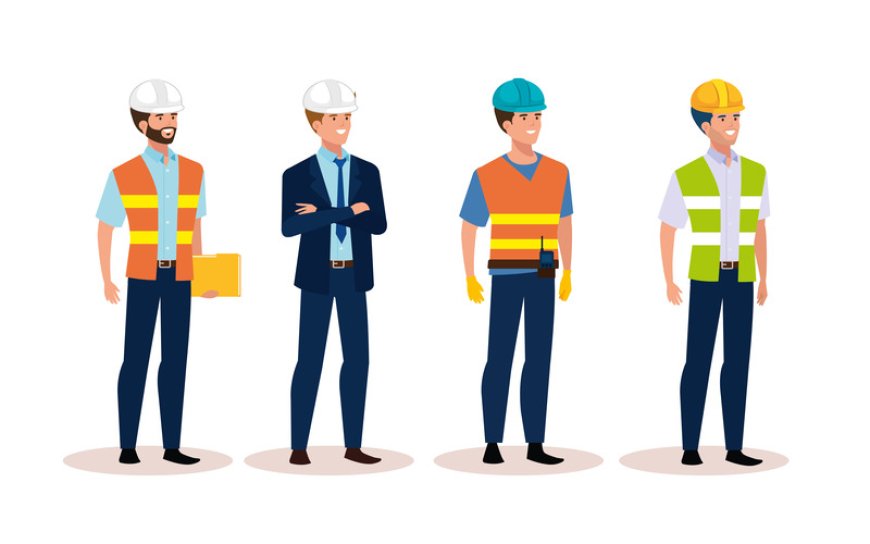Top 7 Key Features of an Ideal Engineer Uniform
Discover the top 7 key features of an ideal engineer uniform, ensuring safety, comfort, and efficiency for professionals in demanding environments.

An engineer uniform is more than just a piece of clothing; it is a vital part of an engineer’s daily work routine, designed to offer comfort, safety, and functionality. Engineers work in various environments, from construction sites to factories, and each setting demands specific features in their uniforms to ensure maximum performance and protection. An ideal engineer uniform is tailored to meet the rigorous demands of these environments, providing durability, flexibility, and practicality for the wearer.

The right engineer uniform helps to enhance productivity and safety by offering the right balance of comfort and functionality. Whether it’s breathable fabric for hot weather, protective gear for hazardous conditions, or pockets and loops for easy access to tools, each feature of the uniform plays a critical role. By combining these essential elements, an ideal engineer uniform ensures that engineers can focus on their work without being distracted by discomfort or safety concerns, creating an optimal working experience.
Here are some Key Features of an Ideal Engineer Uniform
1. Durability and Toughness
Engineers often work in challenging environments, such as construction sites, factories, or outdoor settings. Therefore, the fabric used in an engineer uniform must be durable and resistant to wear and tear. High-quality materials such as cotton blends, polyester, or specialized industrial fabrics can withstand the demands of the job while providing longevity. The uniform should also be resistant to abrasions, cuts, and dirt, ensuring it remains intact despite rough handling and harsh working conditions.
2. Comfort and Flexibility

Comfort is crucial for engineers who spend long hours on their feet or perform physically demanding tasks. The uniform should be designed with ergonomic principles in mind, offering freedom of movement. This can be achieved through stretchable fabrics or well-positioned seams that allow for greater flexibility in movement. Additionally, features like adjustable cuffs, waistbands, and ventilation zones will help keep the engineer comfortable, even in varying work conditions or climates.
3. Safety Features
Safety is paramount for engineers working in high-risk environments. An ideal engineer uniform should include essential safety features such as reflective strips or high-visibility colors for workers in low-light or hazardous areas. Additionally, uniforms can be equipped with flame-retardant properties, electrical resistance, or anti-static materials, depending on the type of engineering work. These safety features help minimize the risk of injury, ensuring that the engineer remains protected throughout the day.
4. Utility and Functionality
Engineers need to have tools and equipment readily available while working. A well-designed engineer uniform incorporates multiple pockets, tool loops, and compartments for easy access to essential tools, pens, notebooks, and devices. These functional elements can make a big difference in terms of efficiency, allowing engineers to stay organized and focused without having to waste time searching for their tools. Pockets should be strategically placed to avoid hindering movement or causing discomfort.
5. Breathability and Moisture-Wicking Properties
Engineers often work in hot, humid, or physically strenuous environments where sweat can become a problem. Therefore, breathable fabrics and moisture-wicking technology are crucial to keeping the engineer comfortable throughout the day. Materials like cotton, mesh panels, or moisture-wicking synthetics help regulate body temperature by allowing air to circulate while pulling moisture away from the body. This keeps the engineer dry and prevents the buildup of uncomfortable perspiration, even in high-heat conditions.
6. Professional Appearance

While functionality and safety are the primary considerations for an engineer uniform, a professional appearance cannot be overlooked. Engineers often interact with clients, management, or other departments, so maintaining a neat and presentable appearance is important. The uniform should have a tailored fit that looks sharp and polished without compromising comfort. Colors and branding (such as company logos or names) should also reflect the professionalism of the company, creating a unified and cohesive team image.
7. Weather Resistance
Engineers frequently work in outdoor or challenging weather conditions, and their uniforms must be equipped to handle such elements. Whether it's rain, snow, wind, or intense sun, an ideal engineer uniform should offer protection from the elements. Features such as water-resistant coatings, windproof materials, and insulated linings ensure the engineer stays warm and dry in harsh weather. These qualities help ensure the uniform's performance in all seasons, making it versatile for year-round use in various climates.
Conclusion
The ideal engineer uniform is designed to provide engineers with the essential balance of comfort, safety, and functionality, allowing them to perform their tasks efficiently and without distraction. Whether they’re working in challenging weather conditions, handling hazardous materials, or requiring quick access to tools, the right uniform ensures that they are well-prepared for any situation. The combination of durable fabrics, safety features, and ergonomic design helps enhance productivity while minimizing the risk of accidents and discomfort.
For companies in Dubai, working with a reputable uniform supplier is crucial in ensuring that engineers are provided with high-quality, purpose-built uniforms. A reliable Dubai uniform company understands the unique demands of various engineering fields and can offer custom-made uniforms tailored to meet industry-specific needs. By investing in the right engineer uniform, businesses can improve the performance, safety, and professionalism of their workforce, contributing to a safer and more efficient working environment.
What's Your Reaction?


























